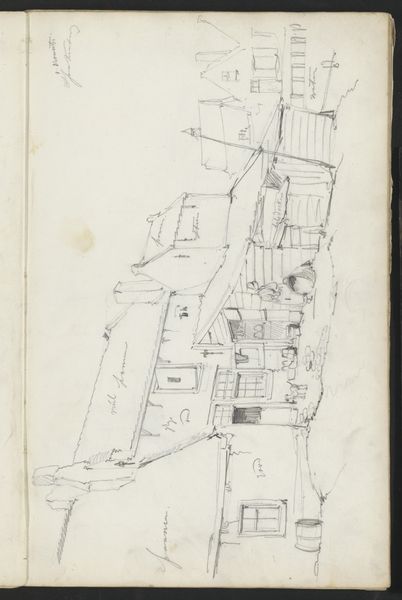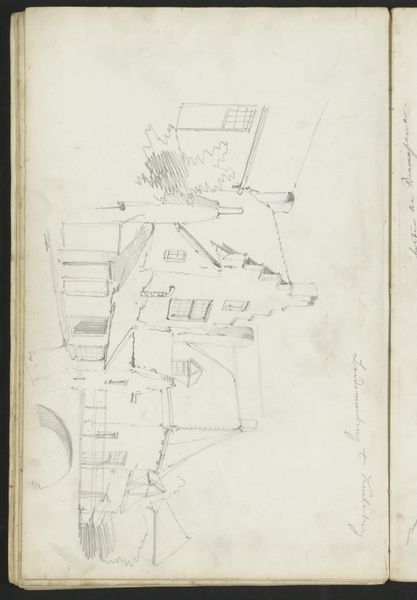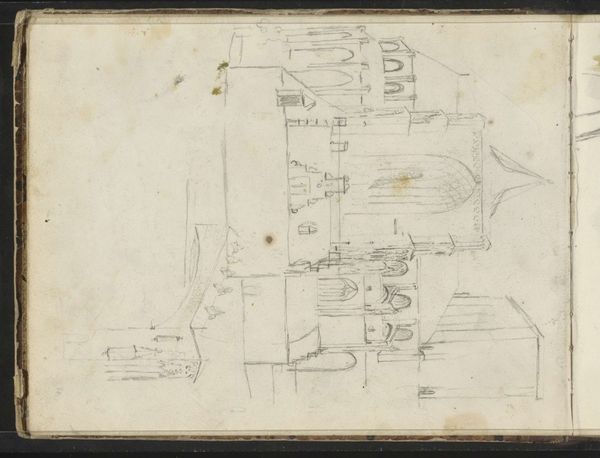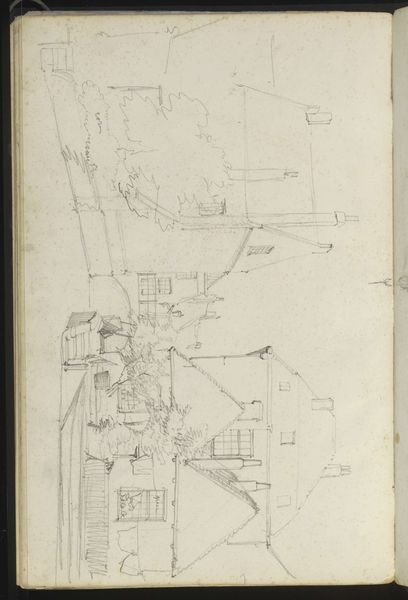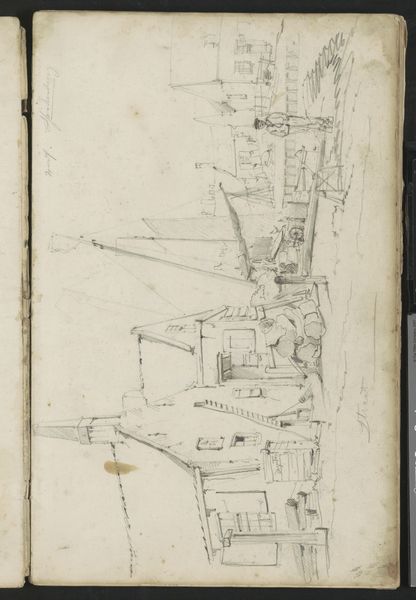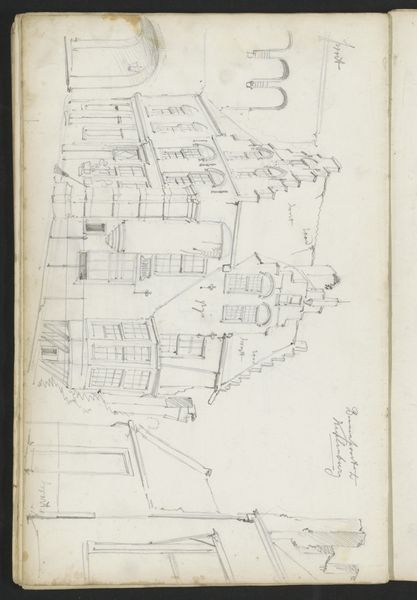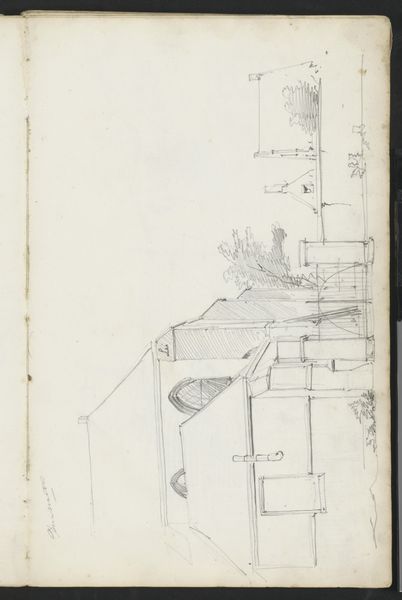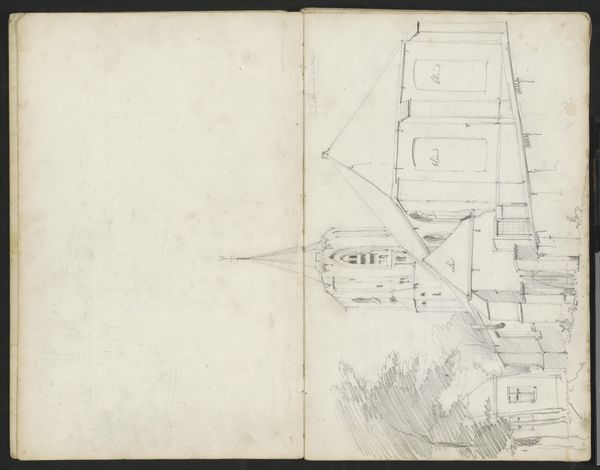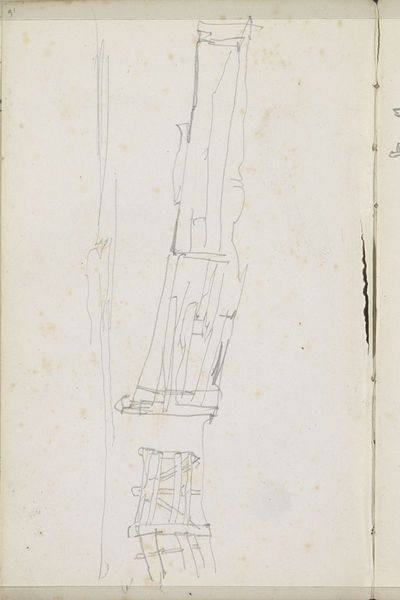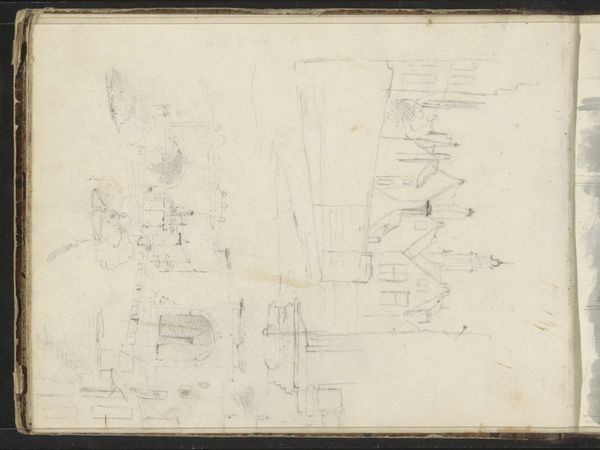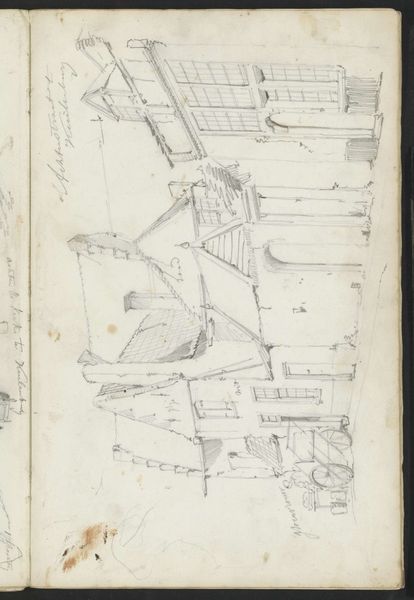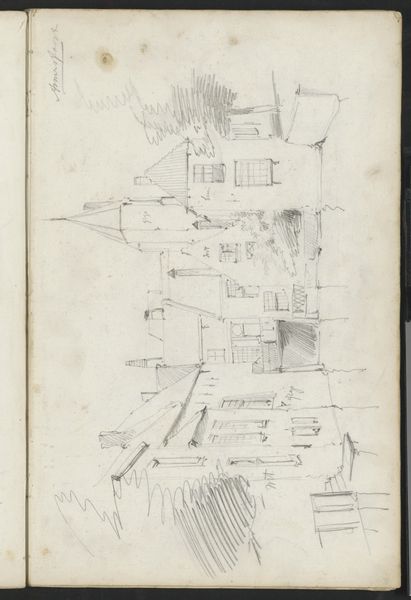
drawing, pencil
#
drawing
#
quirky sketch
#
pen sketch
#
sketch book
#
landscape
#
personal sketchbook
#
sketchwork
#
ink drawing experimentation
#
pen-ink sketch
#
pencil
#
sketchbook drawing
#
storyboard and sketchbook work
#
sketchbook art
#
realism
Copyright: Rijks Museum: Open Domain
Editor: Here we have Willem Koekkoek’s “Huizen met een trap- en tuitgevel te Amersfoort,” a drawing dating from sometime between 1849 and 1895. It seems to be pencil and ink on paper, a quick sketch from life, perhaps? I'm struck by its unfinished quality; it feels very immediate and personal. What do you see in this piece? Curator: I see an intriguing document of urban space and the labor that shaped it. Forget the picturesque facade. Look closely at the materiality – the very paper, the pencil, the ink. Consider them tools, instruments in the act of recording and perhaps even transforming the social landscape. The repetitive rendering of bricks, the delineation of rooflines – these are records of labor, of the building trades that defined Amersfoort at this time. Editor: That’s interesting. I hadn’t thought of it that way. So, you're saying it’s less about the houses themselves and more about… the making of them? Curator: Precisely. The sketch, in its very incompleteness, foregrounds the *process*. We see the artist wrestling with representation, but we can also imagine the builders wrestling with materials, with the demands of the market, with their own physical limitations. How might we connect the artist's labor with that of the craftsman? Are they so different? This piece blurs those traditional distinctions. Editor: I see… The artist's labor versus the builder's… Thinking about the economics of art and architecture and their connection is pretty new to me, but it makes total sense to bring both into the conversation about the drawing. Curator: And, ultimately, to consider how these buildings were then consumed, bought, sold, lived in, altered... all part of a continuous material flow, which Koekkoek's sketch offers just one snapshot of. Editor: This really encourages a different way of engaging with historical artworks. Thanks! Curator: Indeed, by shifting the focus to the tangible processes and materials, a simple sketch reveals a network of labor and economic forces often overlooked in traditional art history.
Comments
No comments
Be the first to comment and join the conversation on the ultimate creative platform.
